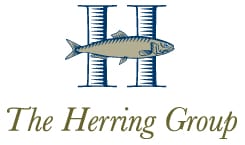BrightView released its results for the quarter ended March 31, 2025 and hosted a call with investment analysts recently. Highlights follow.
BrightView believes its common stock is undervalued and has authorized a $100 million buyback of shares. For perspective, that number represents the approximate amount of cash generated by the business after paying for capital expenditures and interest for the 12 months ended March 31, 2025. Dale Asplund, the CEO, said, “We know that the value of this stock is well above $20.” A stock price of $20 per share would value BrightView at about a 10.8 multiple of adjusted EBITDA. At its recent stock price of $15.60, BrightView is valued at an 8.8 multiple, significantly lower than what we see in sales of large private landscape companies.
Normally, public companies are valued at higher multiples than private companies because public company shareholders can sell their stock at any time. For example, if a private company sold at a 10 multiple, a public company in the same industry might sell at a 12.5 to 14.0 multiple. In the landscape industry, this norm has not been true. Privately held companies have sold for larger multiples than BrightView’s valuation for several years. That situation means that investors think the growth in future cash flows of private landscape companies is greater and more certain than at BrightView.
That situation makes an acquisition strategy at BrightView more difficult. BrightView says that it will resume acquisitions when the time is right.
BrightView’s year-over-year customer retention improved by 1.7 points to approximately 82%. BrightView’s landscape maintenance business is still not growing (even after adjusting for the sale of US Lawns and the discontinuation of BES); it is exceedingly difficult to grow a business with a retention rate of 82%. BrightView’s construction business continues to grow at a modest rate (4.6%).
On the employee front, BrightView is seeing annual wage increases of 2% to 3%. In addition to wage increases, it is now providing crew members with paid time off as a benefit.
Interestingly, BrightView’s employee retention improved so much that its need for H2B visa workers in 2025 was half of its need in 2024 (approximately 2,000 H2B visa workers).
Income Statement Summary
In its public reports, BrightView “adjusts” its earnings before interest taxes depreciation and amortization and net income for certain expenses. I have used some of these adjustments for operating income in the tables below. The idea is that these expenses are not part of ordinary operations. Historically, the adjustments included expenses associated with business transformation and integration, becoming a public company and defending shareholder lawsuits, paying some employees partially through equity-based compensation, and some other unusual expenses. The company also made an adjustment for COVID-19 related expenses. In the table below, I did not adjust the results for COVID-19 expenses because they are a normal part of operations for landscape companies.
For the accounting experts: Note that I have excluded from operating income the expense related to the amortization of intangible assets that were recorded as BrightView acquired other businesses and the gain on divestiture. Since most landscape companies do not have these items, I have excluded them so that management teams can compare their numbers to BrightView’s numbers.
Beginning in the quarter ended March 31, 2024, the sale of US Lawns and the discontinuation of BES make it more difficult to compare BrightView’s current financial results with its historical financial results. For example, in the quarter ended March 31, 2025, the loss of revenue from these entities caused an $8 million reduction in landscape maintenance and a $23 million reduction in snow revenue from the quarter ended March 31, 2024.
To see short-term trends, the following table shows operating results for each of the past five quarters:
| Year Ended | Year Ended | Year Ended | Year Ended | |
| Mar-22 | Mar-23 | Mar-24 | Mar-25 | |
| Snow removal services | 247.3 | 212.7 | 221.2 | 212.9 |
| Landscape maintenance | 1,773.5 | 1,858.7 | 1,817.1 | 1,700.4 |
| Landscape development | 634.8 | 714.4 | 777.8 | 822.7 |
| Eliminations | (4.6) | (8.6) | (6.8) | (6.7) |
| Net service revenues | 2,651.0 | 2,777.2 | 2,809.3 | 2,729.3 |
| Year over year growth rate | 4.8% | 1.2% | -2.8% | |
| Cost of services | 1,994.9 | 2,104.7 | 2,139.3 | 2,095.2 |
| Gross profit | 656.1 | 672.5 | 670.0 | 634.1 |
| Gross profit margin | 24.7% | 24.2% | 23.8% | 23.2% |
| Selling, general and admin (SG&A) expenses | 525.1 | 542.9 | 512.0 | 479.0 |
| Adjustments | (43.7) | (43.7) | (52.1) | (64.8) |
| Ongoing SG&A expenses | 481.4 | 499.2 | 459.9 | 414.2 |
| SG&A as a % of revenue | 18.2% | 18.0% | 16.4% | 15.2% |
| Adjusted operating income | $ 174.7 | $ 173.3 | $ 210.1 | $ 219.9 |
| Operating profit margin | 6.6% | 6.2% | 7.5% | 8.1% |
Greg Herring has served as a CFO of both public and private companies. Herring is the founder and CEO of The Herring Group, financial leaders in the landscape industry on a mission to improve the profit margin of companies, the life margin of owners, and the autonomy of employees by using its proprietary process, the Path to 12%. Read the full blog at herring-group.com/blog or get in touch at herring-group.com/contact.


